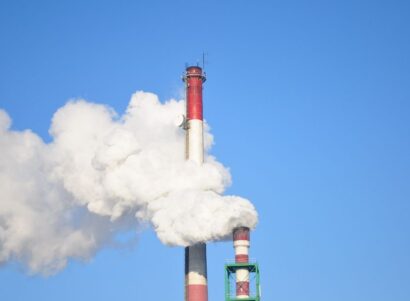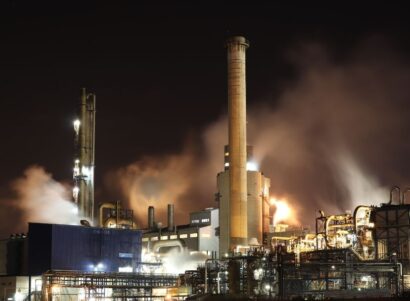Overview
Over half of all buildings in the United States use natural gas to power indoor appliances like kitchen stoves and water heaters. Because homes and buildings have limited air flow, even small gas leaks have the potential to impact indoor air quality. Despite this proximity to people, however, very little data exists on the composition of natural gas when it reaches consumers.
Home is Where the Pipeline Ends provides the first detailed analysis of the hazardous air pollutants present in natural gas used within homes. The study tested natural gas in homes throughout the greater Boston area and found 21 hazardous air pollutants, including benzene, toluene, hexane, and heptane. These pollutants are known to be toxic, linked to cancer, and can form secondary health-damaging pollutants that may impact air quality and human health. The study was published in Environmental Science & Technology and led by researchers at Harvard T.H. Chan School of Public Health, PSE Healthy Energy, Home Energy Efficiency Team (HEET), Atmospheric and Environmental Research (AER), Gas Safety Inc., and Boston University.
Key Findings
- Consumer-grade natural gas in Massachusetts contains at least 21 different hazardous air pollutants, which are known to be toxic or linked to cancer. These chemicals can impact air quality at any point where gas is leaked.
- Small leaks can be odorless, creating the opportunity for them to go undetected. Populations suffering from a loss in the ability to smell due to age, chronic conditions, or infection (e.g., COVID-19) may be at greater risk.
- Concentrations of hazardous air pollutants in natural gas are highly variable. The highest concentrations were observed in the winter.
- Hazardous air pollutants in natural gas leaks are not accounted for in any state or federal emissions inventories. This makes distribution-grade natural gas an untracked and unaccounted-for emissions source of hazardous air pollutants indoors and in urban areas.
Recommendations
Based on the findings, researchers outlined several actions that policymakers and individuals can take immediately to help mitigate the potential health risks posed by distribution-grade natural gas.
Policy Actions
- Interstate gas pipeline companies could regularly measure and report more detailed information on the composition of natural gas, specifically differentiating non-methane volatile organic compounds such as benzene and toluene.
- Given the importance of odorants in gas to detect leaks, federal natural gas odorization regulations should be updated so that natural gas is odorized to meet much lower detection levels than the current 1/5th the lower explosion limit (detectable at ~1% methane).
- Local distribution companies should routinely measure and report natural gas odorant content to customers in a similar fashion to informational postings often produced by interstate gas pipeline companies.
- State regulations could require utility companies to report the volume of known gas leaks to better determine public health risk.
- Given that small leaks may not have a detectable smell, home inspectors and contractors could perform natural gas-appliance leak detection surveys with measurement instruments that detect in the ppm-range, similar to radon tests performed for real estate transactions.
- Natural gas is a previously uncharacterized source of these chemicals in indoor environments and one that could be potentially avoided with the electrification of appliances.
- Building electrification programs must be pursued equitably—ensuring that environmental and social justice communities can benefit, rather than being left with polluting and increasingly expensive energy systems.
Individual Actions
- Because small leaks may evade our sense of smell, getting an in-home natural gas leak detection survey performed by a licensed plumber or heating, ventilation, and air conditioning (HVAC) contractor can verify that no small leaks are present.
- Increasing ventilation is one of the most accessible and important actions to reduce sources of indoor pollution. Opening windows and turning on a vent that exhausts to the outside when cooking are simple steps that can lower the risk of indoor exposure.
- If you smell gas, exit the building and then immediately call your gas company to assess whether there is a leak in or nearby your home.

 Study
Study
 Presentation
Presentation






